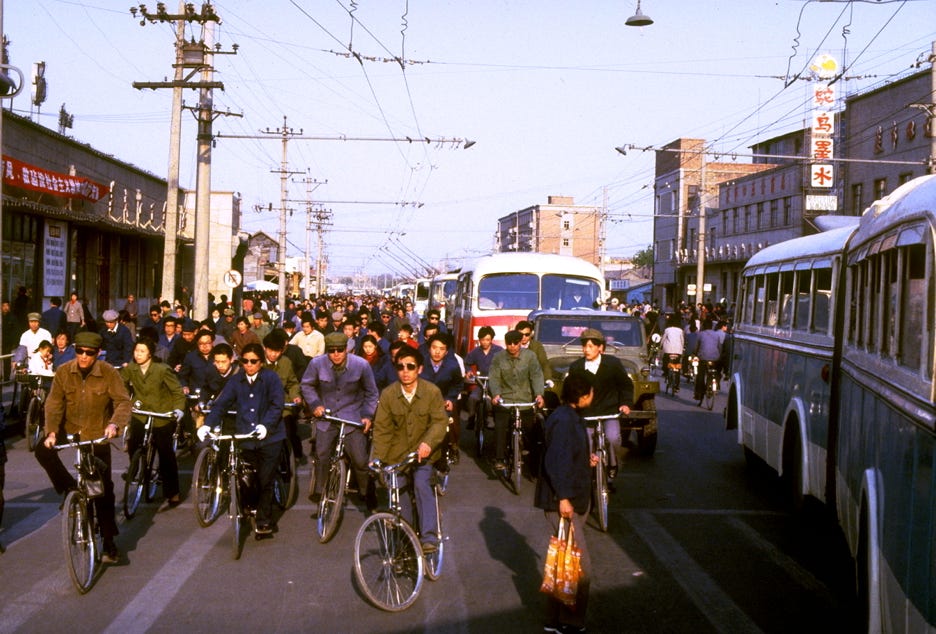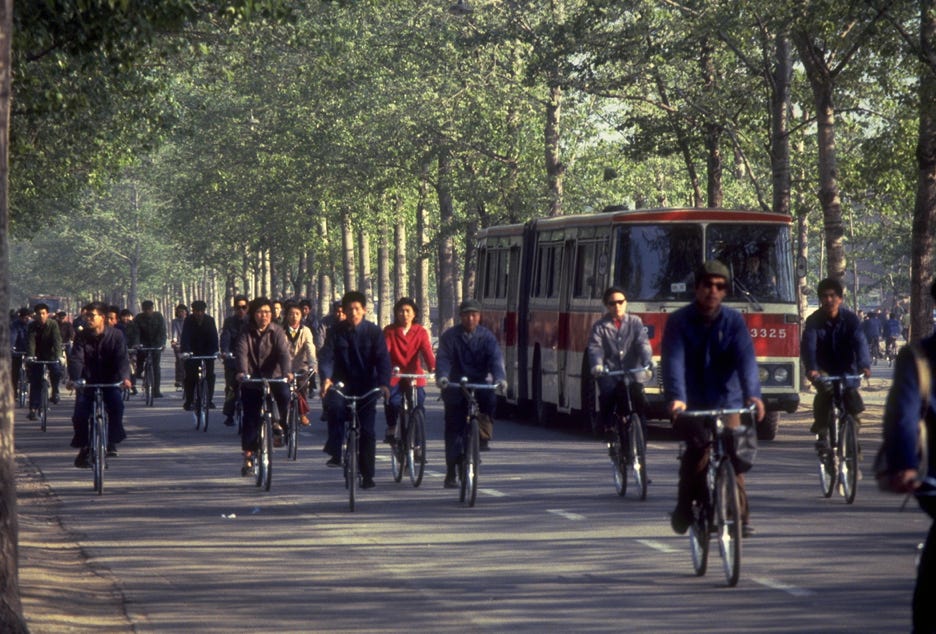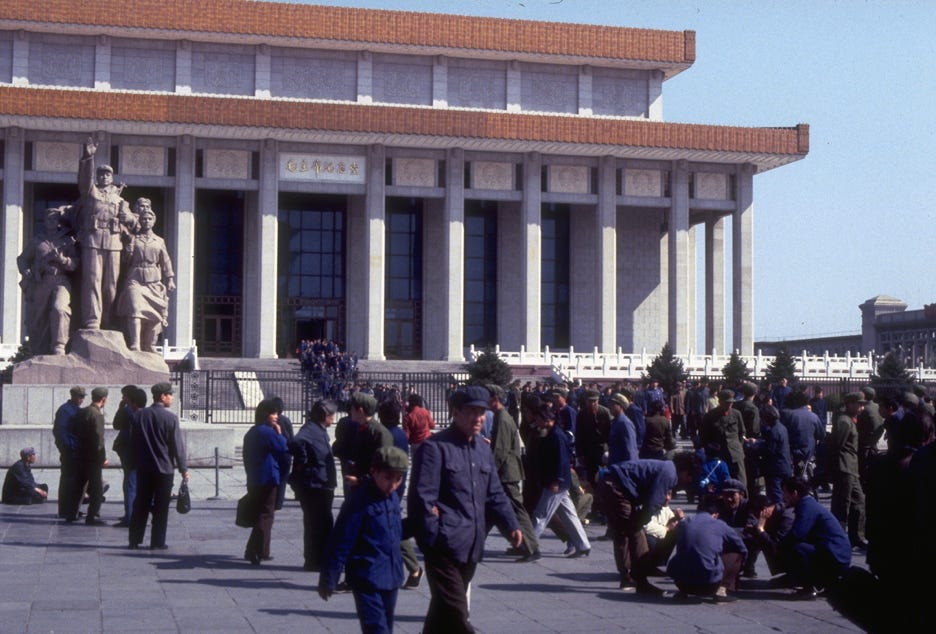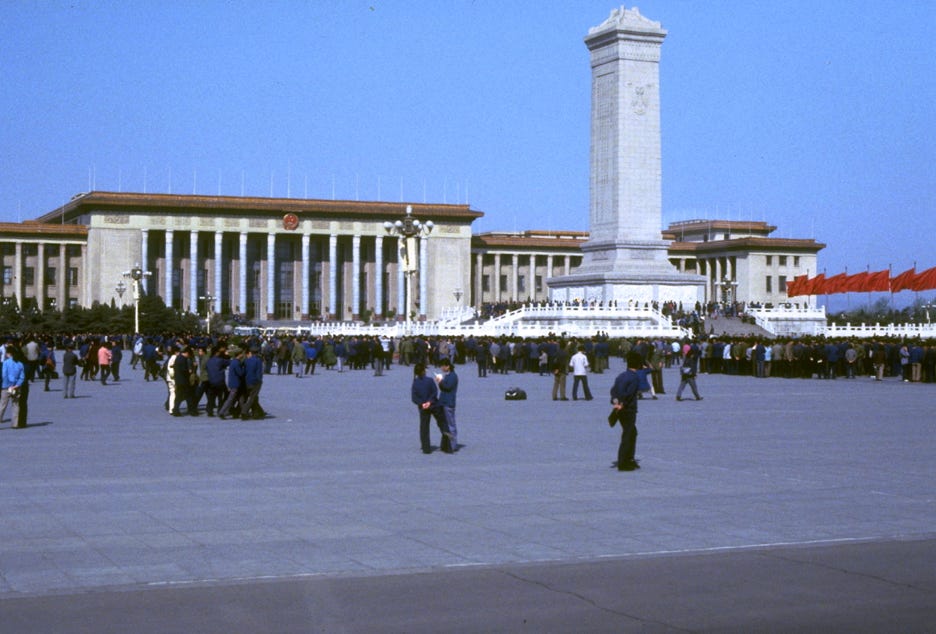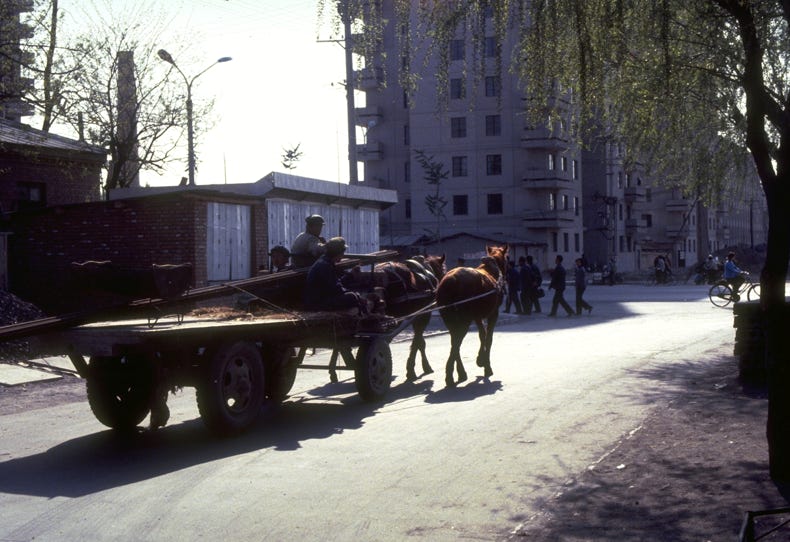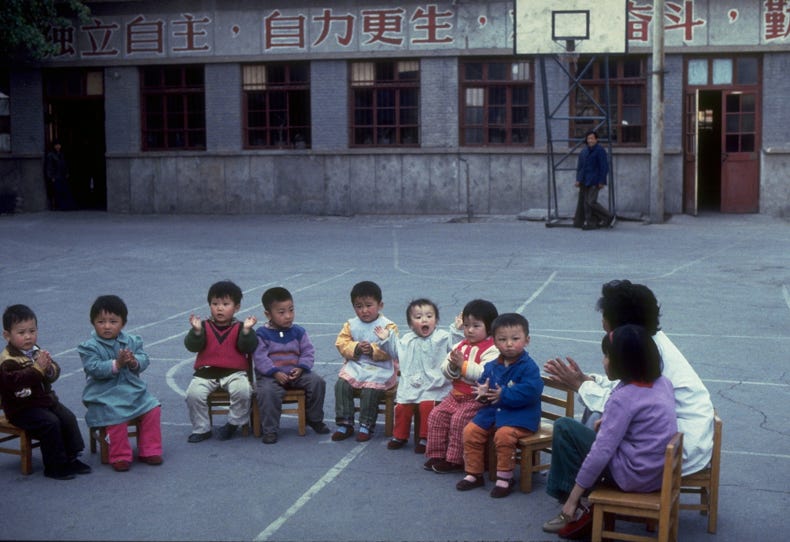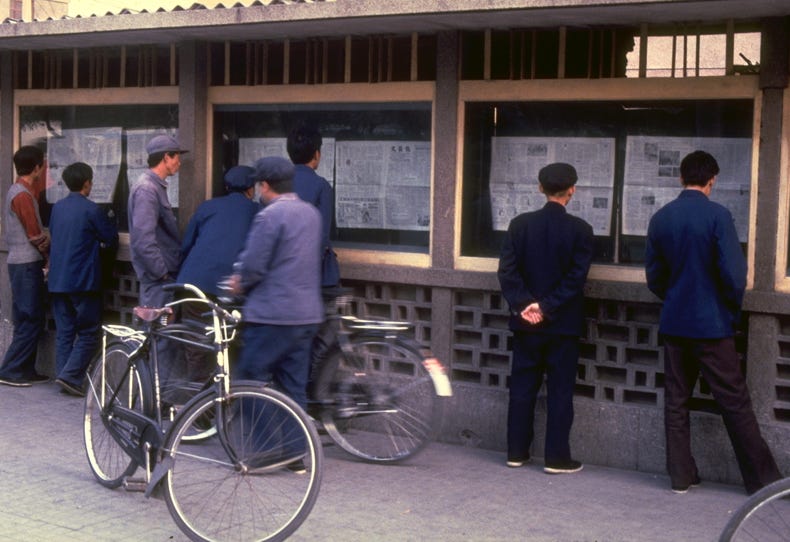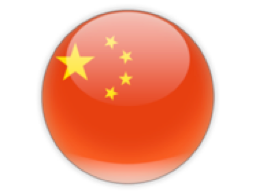

We began today with a visit to the Chairman Mao Memorial Hall in Tien An Men Square. It is only open three mornings per week, and about 10,000 filed through during this morning’s couple of hours. It was embarrassing that as foreign visitors we were ushered to the front of the long queue, being compelled to by-pass several thousand local visitors who were waiting patiently in line. We were told that local people understand this action because they know our schedule is tight, but I wasn’t really convinced.
The Chairman Mao Mausoleum is much more impressive in reality than it appears in photographs. In photographs, it looks small, but the closer you get the real thing, the larger and larger it looms. Everything about the building is larger than life, making the visitor feel very small and insignificant by comparison. There is a religious, cathedral-like atmosphere as everyone silently shuffles through in a two-by-two queue without even a whisper. Naturally, no photographs are allowed inside as taking photos would disrupt both the flow of the procession and the solemnity. Mao’s body is preserved in a crystal case. I thought he looked quite small and somewhat shrivelled with a bright pinkish vinyl complexion.
After the Mao Mausoleum we crossed the road to visit the Great Hall of the People, China’s equivalent to Parliament House. This is a truly impressive building. Despite its 77,000 square metres of floor space, its construction was completed in only ten months in time to commemorate the tenth anniversary of the establishment of the People’s Republic in October 1959.
The building has a banquet hall capable of seating 5,000 people for a meal, a main meeting chamber where 10,000 delegates attend the Chinese People’s Congress, and separate small conference rooms for each of China’s 18 or so provinces, each decorated distinctively to illustrate features of the province. Like the Mao mausoleum, masses of people were inspecting the building when we visited.
Having inspected the Great Hall of the People, we drove to the north-west of Peking to the Summer Palace, built in stages over the centuries, but mainly refurbished in the late 1800s by the Dowager Empress. It was a magnificent site, but once again over-run with tourists, mainly Chinese people enjoying their day off work.
From the Summer Palace we visited an Arts and Crafts factory where we saw jade and ivory carving, hand painting the insides of bottles, and cloisonné. Unfortunately, this was a TT, with no discussion of the statistics of production of the factory – just a quick look around and straight into the sales room. Having said that, it was interesting to catch a glimpse of the creche in operation and the board where the efforts of model workers are recognised.
After dinner, we went to a performance of the Peking Opera. It was slightly more melodious than the gongs and cymbals of the opera in Chungking, and enjoyable in its own way. All-in-all, it has been extremely tiring 14-hour non-stop day, and I’m really looking forward to doing some clothes washing and then getting a good sleep tonight.

